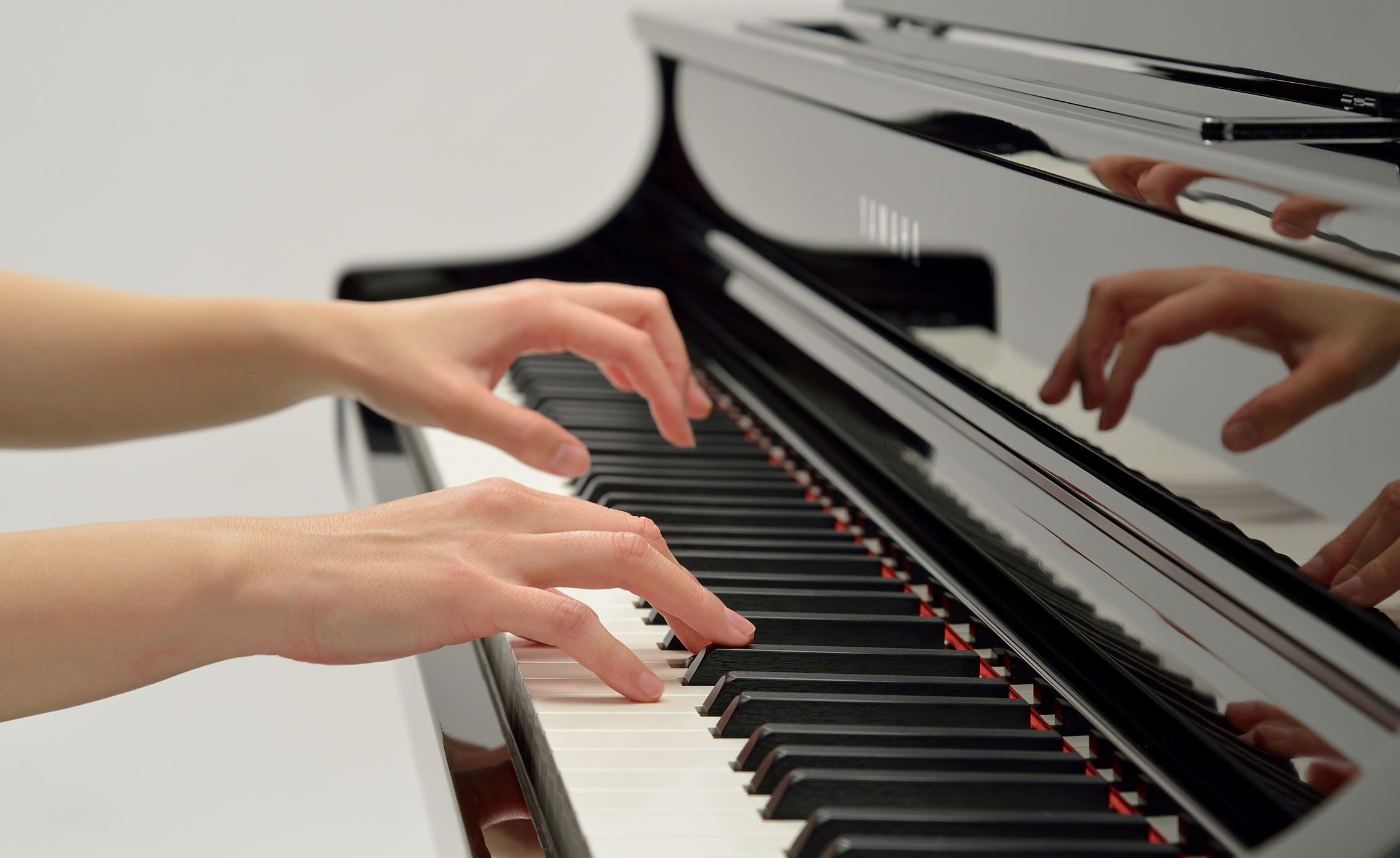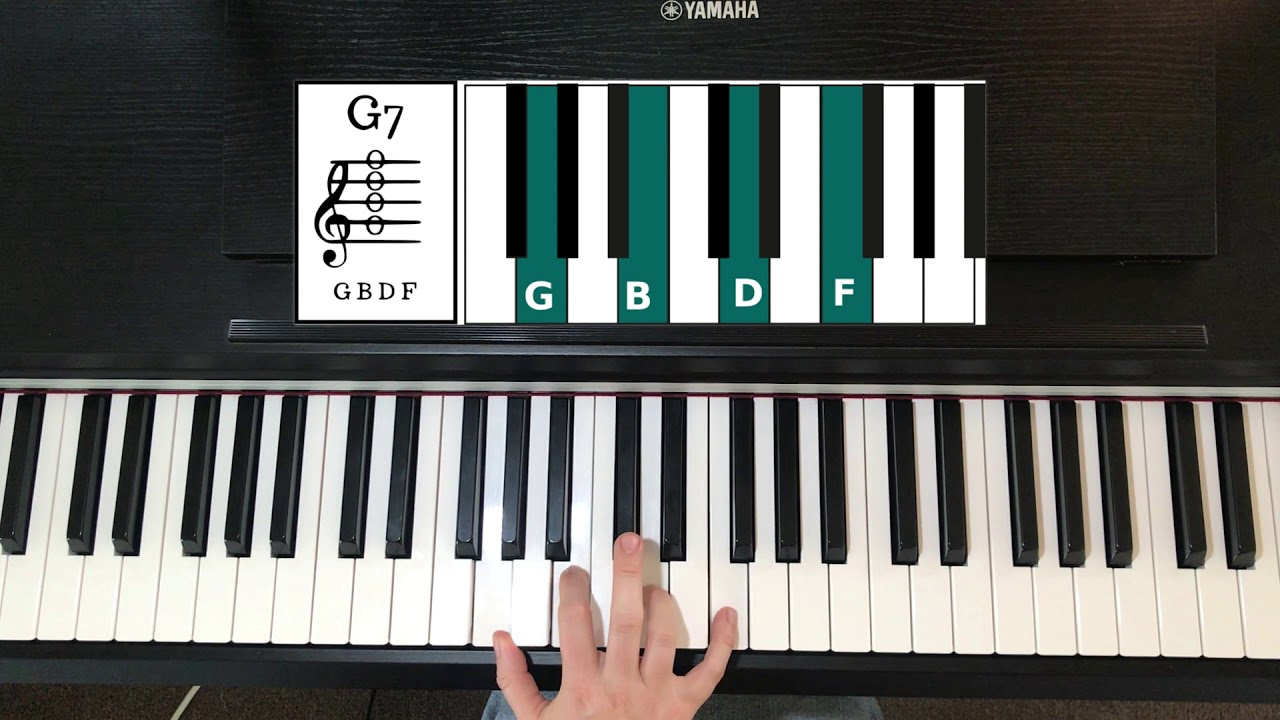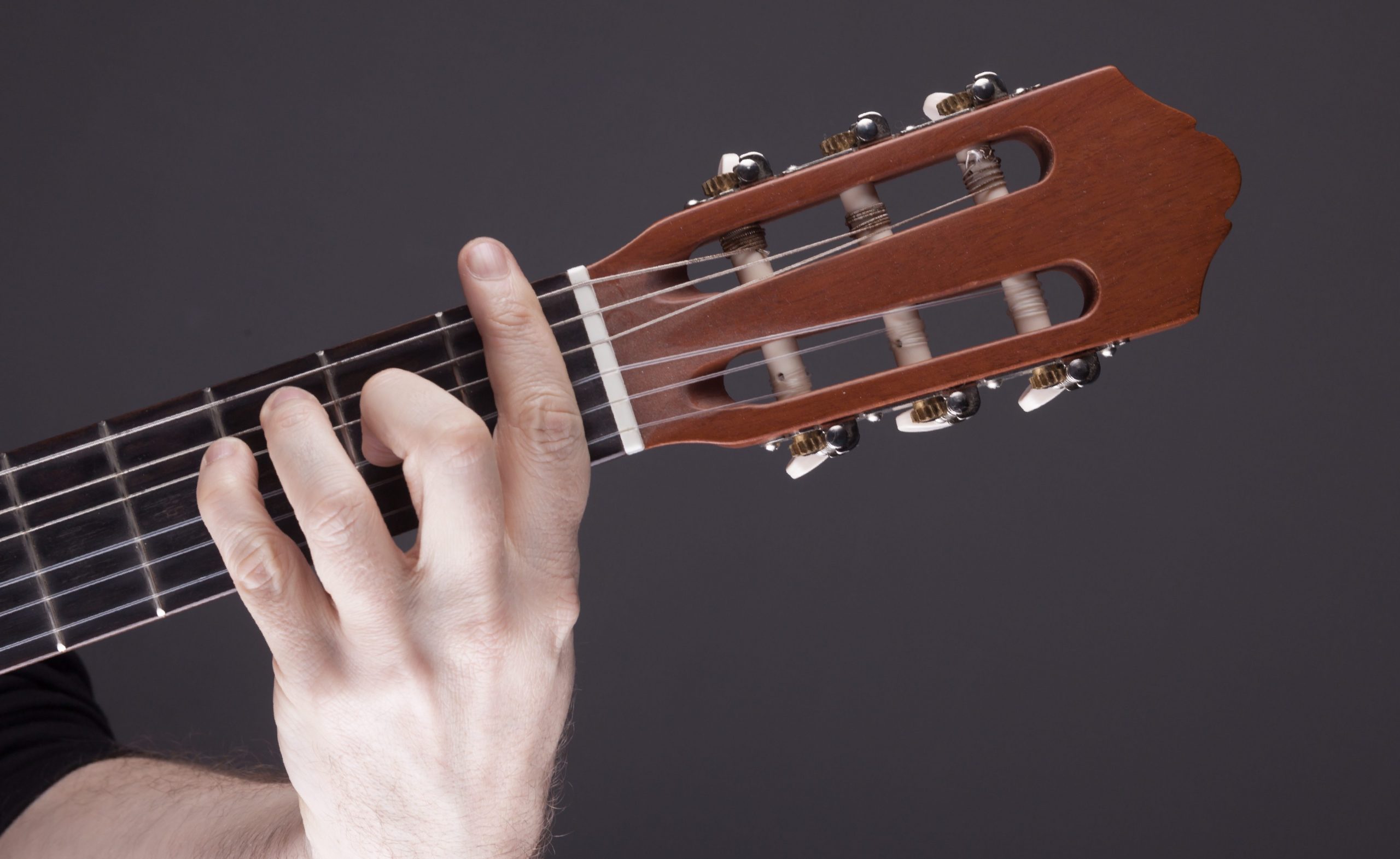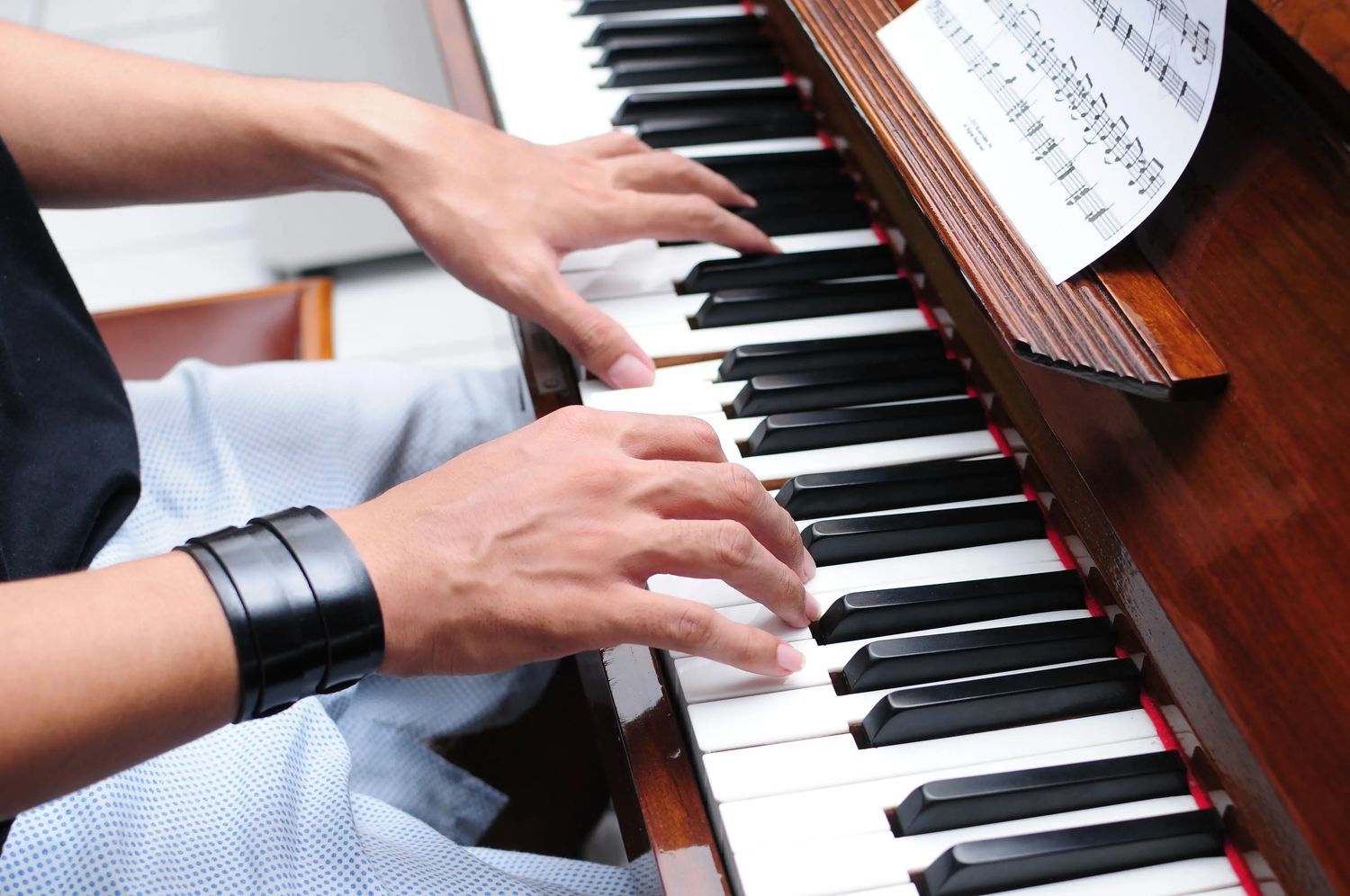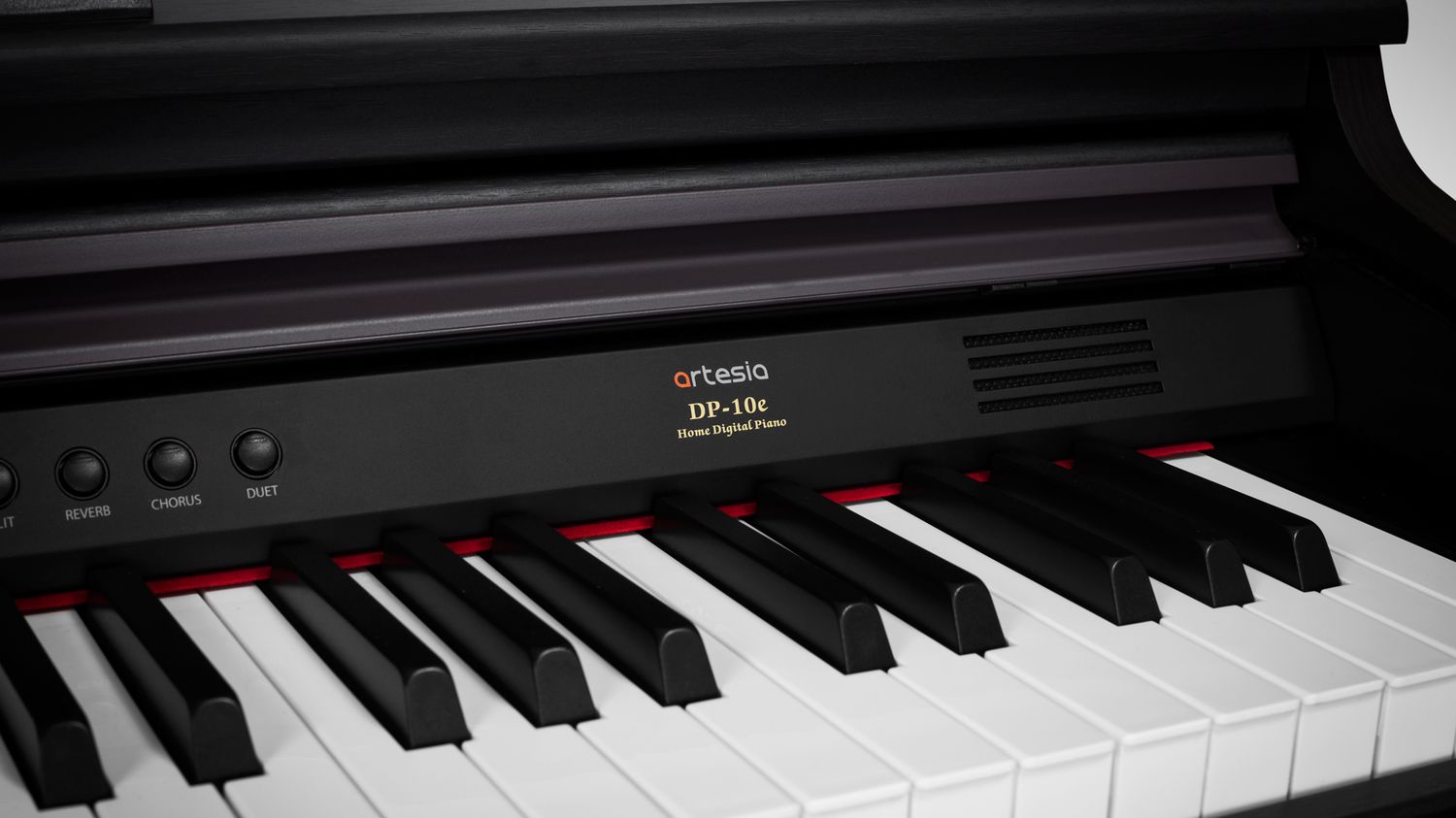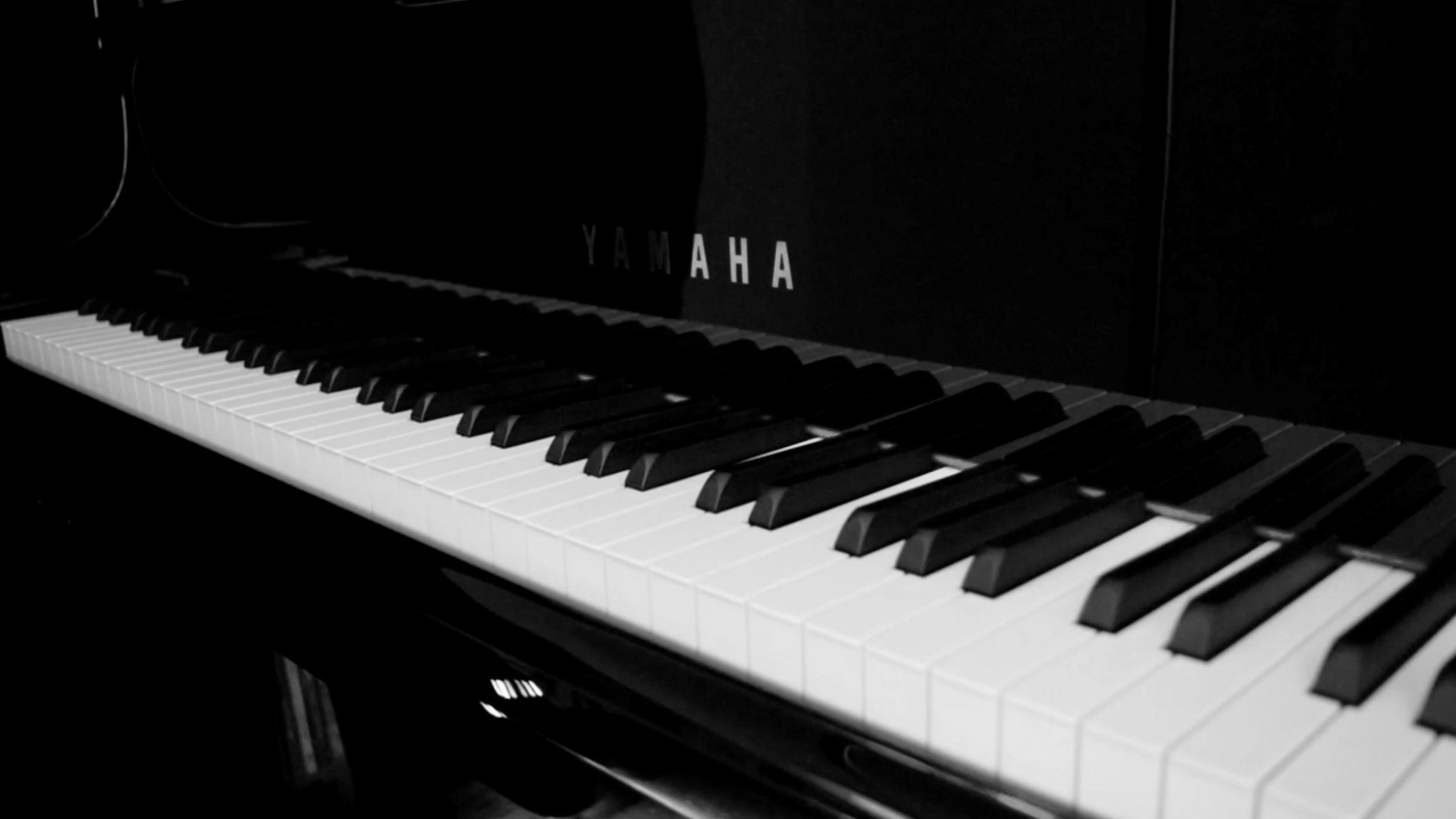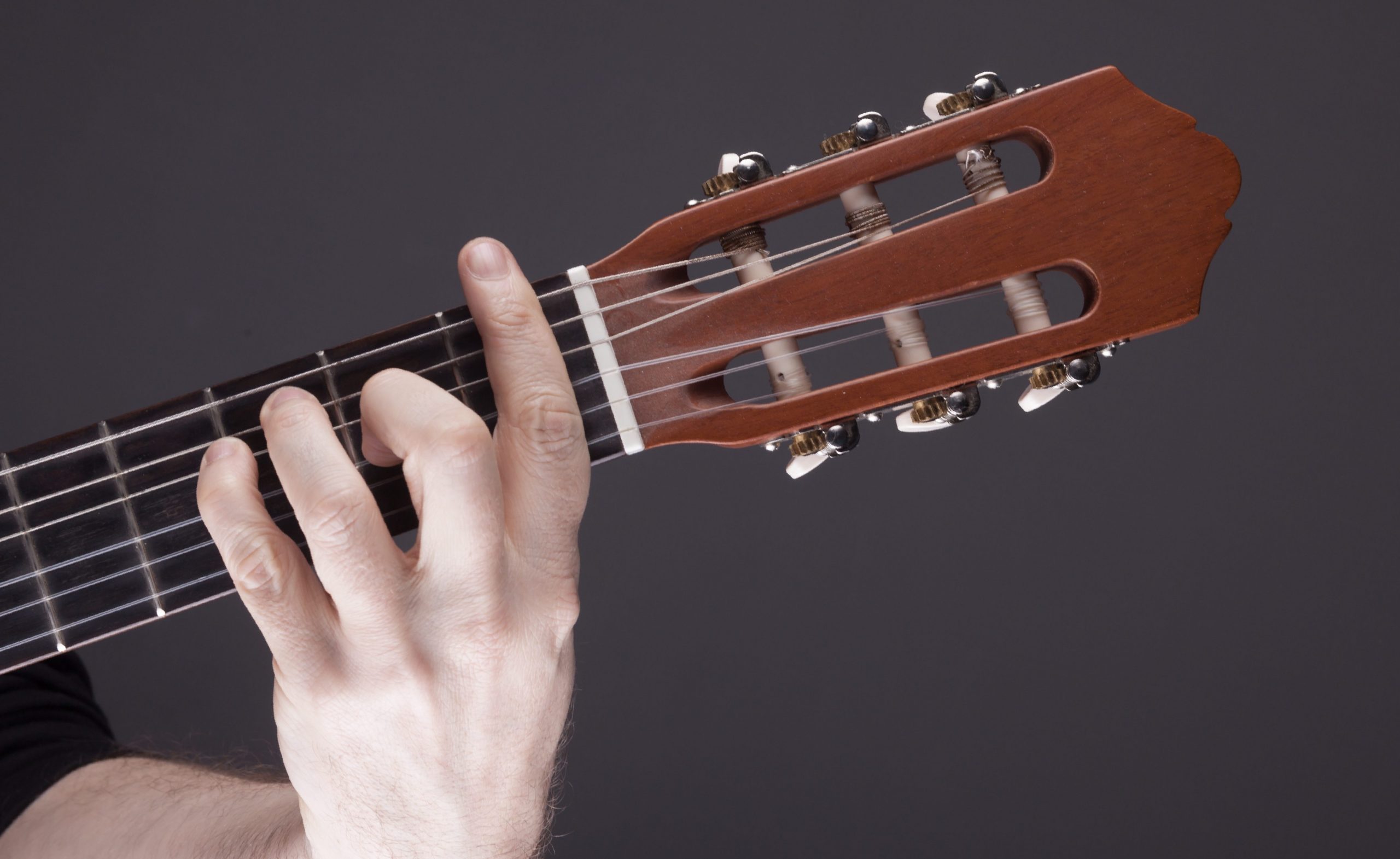Home>Instruments>Piano>How To Play 7th Chords On Piano
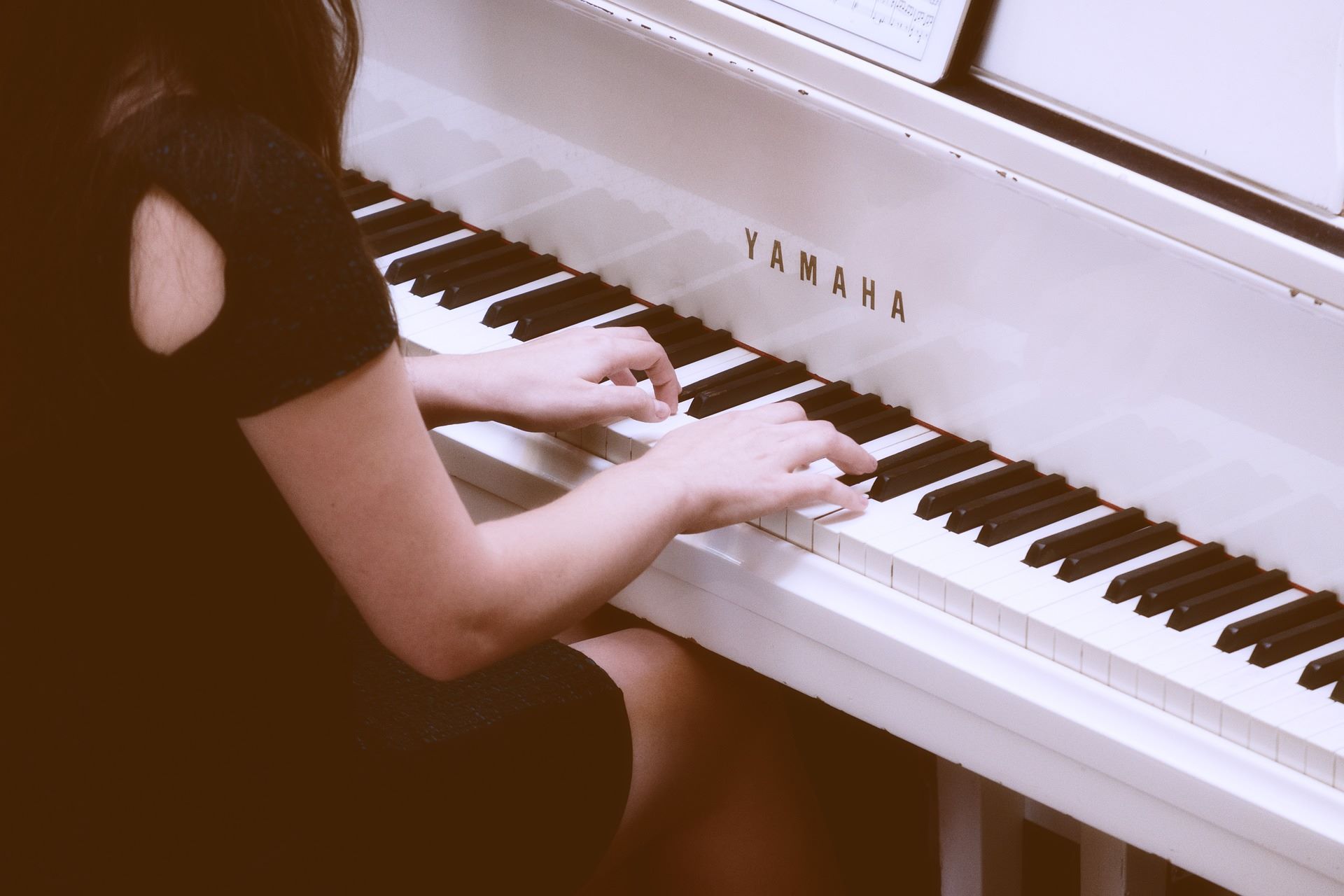

Piano
How To Play 7th Chords On Piano
Published: February 11, 2024
Learn how to play 7th chords on piano with our step-by-step guide. Master the art of creating rich harmonies and adding depth to your playing. Start enhancing your piano skills today!
(Many of the links in this article redirect to a specific reviewed product. Your purchase of these products through affiliate links helps to generate commission for AudioLover.com, at no extra cost. Learn more)
Table of Contents
Introduction
Playing the piano is a rewarding and enriching experience. Whether you're a beginner or an experienced pianist, mastering different chord types can add depth and complexity to your playing. One of the most versatile and expressive chord types is the 7th chord. In this article, we will explore the world of 7th chords and how to play them on the piano.
Understanding and incorporating 7th chords into your playing can elevate your musicality, adding a layer of sophistication to your compositions and improvisations. These chords are widely used in various music genres, including jazz, blues, pop, and classical music, making them an essential skill for any aspiring pianist.
In the following sections, we will delve into the intricacies of major 7th, minor 7th, dominant 7th, half-diminished 7th, and fully-diminished 7th chords. Each type has its unique sound and character, offering a diverse range of emotional expression and harmonic possibilities. By mastering these chords, you can expand your musical repertoire and infuse your playing with rich and captivating harmonies.
Whether you're looking to enhance your improvisational skills, understand the harmonic structure of your favorite songs, or compose your own music, 7th chords are a valuable tool in your musical arsenal. So, let's embark on this musical journey and unlock the secrets of playing 7th chords on the piano.
Understanding 7th Chords
Before diving into the specifics of playing 7th chords on the piano, it’s essential to grasp the fundamental structure and characteristics of these chords. A 7th chord is a four-note chord comprising a root note, a third, a fifth, and a seventh. The additional note, the seventh, distinguishes 7th chords from traditional triads, imbuing them with a richer and more complex sound.
There are several types of 7th chords, each with its unique formula and sound. The most common types include major 7th, minor 7th, dominant 7th, half-diminished 7th, and fully-diminished 7th chords. Understanding the intervals and qualities of these chords is crucial for effectively incorporating them into your piano playing.
Major 7th chords, for example, feature a major third and a major seventh interval, creating a lush and consonant quality. In contrast, minor 7th chords are characterized by a minor third and a minor seventh, evoking a more introspective and melancholic feel. Dominant 7th chords, commonly found in jazz and blues music, possess a major third and a minor seventh, imparting a sense of tension and resolution.
Half-diminished 7th chords, with a diminished fifth and a minor seventh, exude a mysterious and ambiguous aura, often used to convey a sense of uncertainty in musical compositions. Fully-diminished 7th chords, featuring a diminished third and a diminished seventh, offer a dissonant and enigmatic quality, adding depth and complexity to harmonic progressions.
By familiarizing yourself with the unique characteristics of each 7th chord type, you can harness their emotive power and harmonic richness to elevate your piano playing. Whether you’re exploring the expressive melodies of a major 7th chord or the soulful allure of a minor 7th chord, understanding the nuances of these chords is essential for musical proficiency.
Now that we’ve laid the groundwork for comprehending 7th chords, let’s embark on a journey to learn how to play these captivating chords on the piano.
Playing Major 7th Chords
Major 7th chords are renowned for their dreamy and sophisticated sound, often associated with jazz and contemporary music. To play a major 7th chord on the piano, you’ll need to understand its specific notes and fingering technique.
The formula for a major 7th chord is root, major third, perfect fifth, and major seventh. For example, in the key of C, a C major 7th chord consists of the notes C, E, G, and B. To play this chord, position your right hand’s thumb on C, middle finger on E, pinky on G, and index finger on B. Ensure that your fingers are curved and that you apply consistent pressure to produce clear and resonant tones.
When playing a major 7th chord, it’s essential to maintain a relaxed posture and wrist position, allowing for fluid movement across the keys. Start by practicing the chord in a slow and deliberate manner, focusing on achieving a balanced sound across all notes. Gradually increase the tempo as you gain confidence, aiming for a seamless transition between chords.
Experiment with different inversions of the major 7th chord to explore varied voicings and harmonic textures. Inverting the chord involves rearranging the order of the notes while retaining the same pitches. This technique can add depth and versatility to your chord progressions, enabling you to create captivating musical arrangements.
As you familiarize yourself with major 7th chords, incorporate them into your practice sessions and musical explorations. Experiment with integrating major 7th chords into your favorite songs or composing original pieces that showcase the evocative qualities of these chords. Embrace the expressive potential of major 7th chords, infusing your playing with their enchanting allure.
By mastering the art of playing major 7th chords on the piano, you can unlock a world of harmonic richness and melodic sophistication, expanding your musical horizons and captivating audiences with your expressive interpretations.
Playing Minor 7th Chords
Minor 7th chords exude a soulful and introspective quality, adding depth and emotion to musical compositions. Mastering the art of playing these evocative chords on the piano can significantly enrich your harmonic palette and expressive capabilities.
The formula for a minor 7th chord comprises the root, minor third, perfect fifth, and minor seventh. For instance, in the key of A minor, an A minor 7th chord consists of the notes A, C, E, and G. To play this chord, position your fingers accordingly, with your thumb on A, middle finger on C, pinky on E, and index finger on G. Maintain a relaxed hand posture and ensure that each note resonates clearly as you press the keys.
When playing minor 7th chords, focus on achieving a balanced and melancholic sound that encapsulates the emotive essence of the chord. Pay attention to the nuanced interplay between the minor third and minor seventh, which imbues the chord with its distinctive introspective character.
Experiment with different voicings and inversions of the minor 7th chord to discover unique harmonic textures and melodic possibilities. By exploring various fingerings and chord voicings, you can expand your musical vocabulary and infuse your playing with captivating tonal variations.
Integrating minor 7th chords into your practice routine and musical repertoire can open up a world of expressive possibilities. Whether you’re interpreting a poignant ballad or crafting your own compositions, harnessing the emotive power of minor 7th chords can elevate your musical storytelling and captivate listeners with poignant melodies and harmonies.
As you delve into the realm of minor 7th chords, embrace their emotive potential and incorporate them into your musical explorations. Whether you’re navigating the bittersweet allure of a minor 7th chord progression or weaving its melancholic charm into a musical narrative, these chords offer a rich tapestry of emotional expression and harmonic depth.
By mastering the art of playing minor 7th chords on the piano, you can infuse your musical creations with soul-stirring melodies and poignant harmonies, establishing a profound connection with your audience and conveying profound emotions through your expressive interpretations.
Playing Dominant 7th Chords
Dominant 7th chords are revered for their vibrant and dynamic sound, commonly featured in jazz, blues, and popular music genres. Mastering the technique of playing these captivating chords on the piano can imbue your playing with a sense of tension, resolution, and rhythmic vitality.
The formula for a dominant 7th chord consists of the root, major third, perfect fifth, and minor seventh. For example, in the key of G, a G dominant 7th chord comprises the notes G, B, D, and F. To play this chord, position your fingers accordingly, with your thumb on G, middle finger on B, pinky on D, and index finger on F. Ensure that each note is articulated clearly, producing a resonant and balanced sound.
When playing dominant 7th chords, pay attention to the interplay between the major third and minor seventh, which creates the chord’s characteristic sense of tension and release. Emphasize the rhythmic vitality of the chord, infusing it with a spirited and propulsive quality that propels musical phrases forward.
Experiment with different rhythmic patterns and voicings to explore the versatile nature of dominant 7th chords. Incorporate syncopated rhythms and dynamic accents to accentuate the chord’s energetic and expressive attributes, adding a sense of flair and spontaneity to your playing.
Integrating dominant 7th chords into your improvisational sessions and musical arrangements can elevate the rhythmic drive and harmonic complexity of your compositions. Whether you’re embarking on a spirited jazz improvisation or infusing a bluesy edge into a musical motif, these chords offer a diverse range of expressive possibilities.
As you delve into the realm of dominant 7th chords, embrace their spirited and dynamic nature, allowing their vibrant tonal qualities to infuse your playing with rhythmic verve and expressive flair. Whether you’re navigating the exhilarating cadences of a dominant 7th chord progression or unleashing its infectious groove in a musical performance, these chords are a testament to the captivating power of harmonic tension and release.
By mastering the art of playing dominant 7th chords on the piano, you can invigorate your musical expressions with rhythmic vitality and harmonic allure, captivating audiences with the infectious energy and dynamic spirit of these compelling chords.
Playing Half-Diminished 7th Chords
Half-diminished 7th chords, also known as minor 7th flat 5 chords, possess a captivating and enigmatic quality, often employed to convey a sense of ambiguity and introspection in musical compositions. Mastering the technique of playing these intriguing chords on the piano can add depth and complexity to your harmonic explorations.
The formula for a half-diminished 7th chord comprises the root, minor third, diminished fifth, and minor seventh. For instance, in the key of B, a B half-diminished 7th chord consists of the notes B, D, F, and A. Position your fingers accordingly, with your thumb on B, middle finger on D, pinky on F, and index finger on A, ensuring that each note resonates clearly and melodically.
When playing half-diminished 7th chords, emphasize the chord’s mysterious and introspective qualities, allowing the diminished fifth and minor seventh to evoke a sense of unresolved tension and emotional depth. Explore the nuanced interplay between the chord tones, weaving a tapestry of enigmatic harmonies that captivate the listener’s imagination.
Experiment with different voicings and inversions of the half-diminished 7th chord to discover unique harmonic textures and melodic possibilities. By exploring varied fingerings and chord voicings, you can expand your musical vocabulary and infuse your playing with captivating tonal variations, adding a layer of complexity to your musical arrangements.
Integrating half-diminished 7th chords into your musical repertoire can enrich your compositions with a sense of mystery and introspection. Whether you’re crafting emotive ballads, exploring avant-garde musical styles, or infusing a touch of melancholic allure into your improvisations, these chords offer a wealth of expressive possibilities.
As you delve into the realm of half-diminished 7th chords, embrace their enigmatic and emotive nature, allowing their captivating tonal qualities to infuse your playing with introspective depth and harmonic complexity. Whether you’re navigating the evocative allure of a half-diminished 7th chord progression or weaving its enigmatic charm into a musical narrative, these chords offer a rich tapestry of emotional expression and harmonic intrigue.
By mastering the art of playing half-diminished 7th chords on the piano, you can infuse your musical creations with a sense of enigmatic allure and introspective depth, establishing a profound connection with your audience and conveying profound emotions through your expressive interpretations.
Playing Fully-Diminished 7th Chords
Fully-diminished 7th chords possess a haunting and enigmatic quality, often associated with moments of tension, suspense, and emotional depth in musical compositions. Mastering the technique of playing these evocative chords on the piano can add an element of mystery and complexity to your harmonic repertoire.
The formula for a fully-diminished 7th chord comprises the root, minor third, diminished fifth, and diminished seventh. For example, in the key of D, a D fully-diminished 7th chord consists of the notes D, F, Ab, and B. Position your fingers accordingly, with your thumb on D, middle finger on F, index finger on Ab, and pinky on B, ensuring that each note resonates clearly and evocatively.
When playing fully-diminished 7th chords, emphasize the chord’s dissonant and unresolved qualities, allowing the diminished fifth and diminished seventh to create a sense of haunting tension and emotional complexity. Explore the intricate interplay between the chord tones, weaving a tapestry of enigmatic harmonies that captivate the listener’s imagination and evoke a profound emotional response.
Experiment with different voicings and inversions of the fully-diminished 7th chord to discover unique harmonic textures and melodic possibilities. By exploring varied fingerings and chord voicings, you can expand your musical vocabulary and infuse your playing with captivating tonal variations, adding depth and complexity to your musical arrangements.
Integrating fully-diminished 7th chords into your musical repertoire can imbue your compositions with a sense of suspense, intrigue, and emotional depth. Whether you’re crafting cinematic soundscapes, exploring avant-garde musical styles, or infusing a touch of haunting allure into your compositions, these chords offer a wealth of expressive possibilities.
As you delve into the realm of fully-diminished 7th chords, embrace their haunting and emotive nature, allowing their captivating tonal qualities to infuse your playing with evocative depth and harmonic complexity. Whether you’re navigating the enigmatic allure of a fully-diminished 7th chord progression or weaving its haunting charm into a musical narrative, these chords offer a rich tapestry of emotional expression and harmonic intrigue.
By mastering the art of playing fully-diminished 7th chords on the piano, you can infuse your musical creations with a sense of haunting allure and emotional depth, establishing a profound connection with your audience and conveying profound emotions through your expressive interpretations.
Conclusion
Congratulations on embarking on a musical journey to explore the captivating world of 7th chords on the piano. Throughout this article, we’ve delved into the intricacies of major 7th, minor 7th, dominant 7th, half-diminished 7th, and fully-diminished 7th chords, unraveling their unique qualities and emotive potential. By mastering these diverse chord types, you can expand your harmonic palette, infuse your playing with expressive depth, and unlock a myriad of creative possibilities.
As you continue to refine your skills and delve deeper into the art of playing 7th chords, remember that practice, patience, and attentive listening are key components of your musical journey. Embrace the nuances of each chord type, experiment with different voicings and inversions, and allow your musical intuition to guide your interpretations.
Whether you’re drawn to the dreamy allure of major 7th chords, the introspective depth of minor 7th chords, the rhythmic vitality of dominant 7th chords, the enigmatic allure of half-diminished 7th chords, or the haunting complexity of fully-diminished 7th chords, each chord type offers a wealth of expressive possibilities waiting to be explored.
By incorporating 7th chords into your practice sessions, improvisations, and musical compositions, you can elevate your playing, captivate audiences with emotive storytelling, and embark on a musical odyssey filled with creativity and inspiration.
So, as you sit at the piano, let the evocative qualities of 7th chords guide your hands and stir your imagination. Embrace the harmonic richness, emotional depth, and expressive allure of these captivating chords, and allow them to become integral components of your musical identity.
May your musical endeavors be filled with discovery, passion, and the transformative power of 7th chords, enriching your artistic journey and resonating with the hearts of those who experience your musical expressions.

